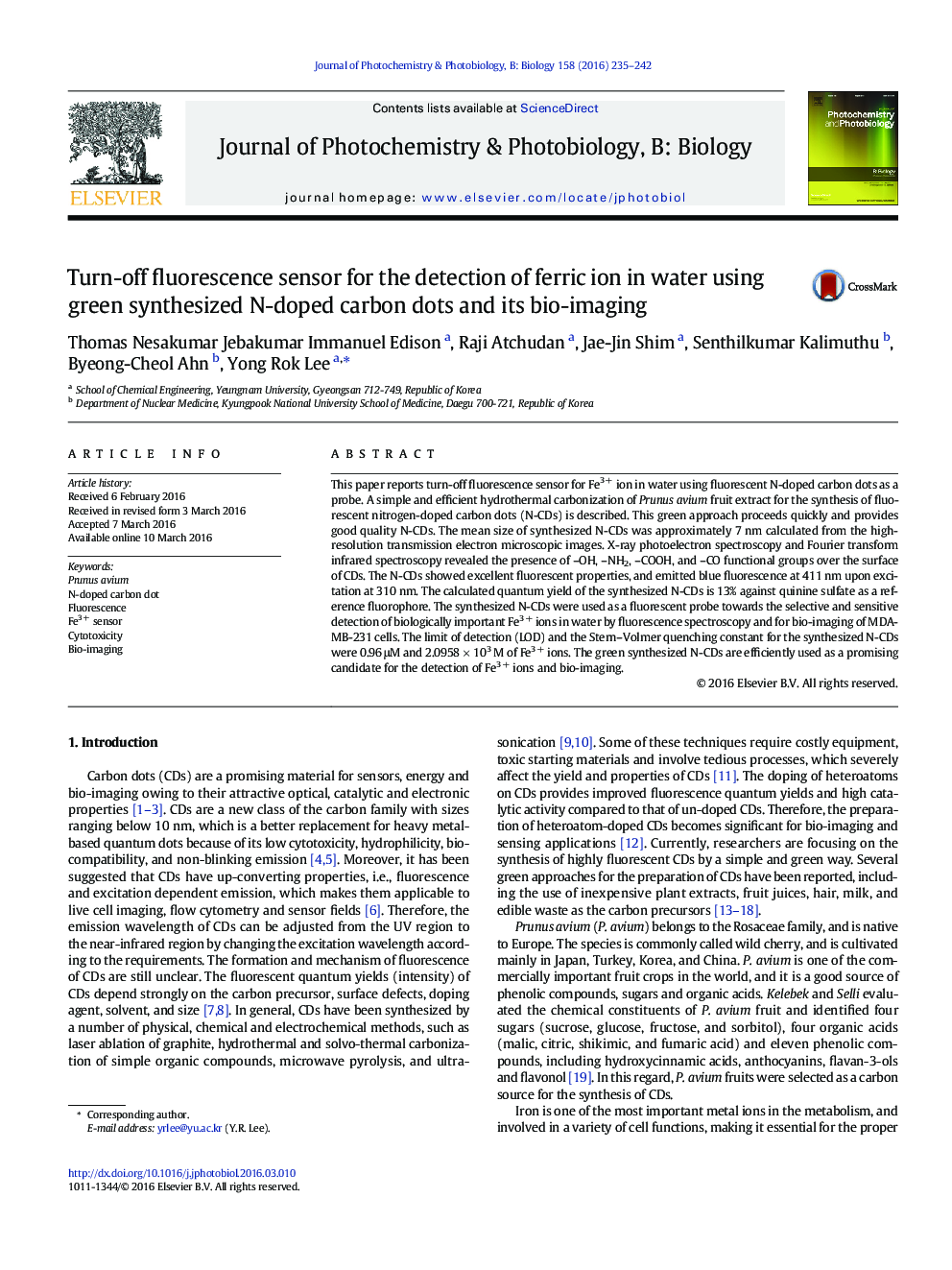| Article ID | Journal | Published Year | Pages | File Type |
|---|---|---|---|---|
| 29902 | Journal of Photochemistry and Photobiology B: Biology | 2016 | 8 Pages |
•Fluorescent N-CDs were synthesized using inexpensive Prunus avium fruit extract.•N-CDs are better replacement probe for heavy metal-based quantum dots and dyes.•N-CDs were used as an effective fluorescent probe for sensing of Fe3 + in water.•N-CDs showed low cytotoxicity and good biocompatibility on MDA-MB-231 cells.
This paper reports turn-off fluorescence sensor for Fe3 + ion in water using fluorescent N-doped carbon dots as a probe. A simple and efficient hydrothermal carbonization of Prunus avium fruit extract for the synthesis of fluorescent nitrogen-doped carbon dots (N-CDs) is described. This green approach proceeds quickly and provides good quality N-CDs. The mean size of synthesized N-CDs was approximately 7 nm calculated from the high-resolution transmission electron microscopic images. X-ray photoelectron spectroscopy and Fourier transform infrared spectroscopy revealed the presence of –OH, –NH2, –COOH, and –CO functional groups over the surface of CDs. The N-CDs showed excellent fluorescent properties, and emitted blue fluorescence at 411 nm upon excitation at 310 nm. The calculated quantum yield of the synthesized N-CDs is 13% against quinine sulfate as a reference fluorophore. The synthesized N-CDs were used as a fluorescent probe towards the selective and sensitive detection of biologically important Fe3 + ions in water by fluorescence spectroscopy and for bio-imaging of MDA-MB-231 cells. The limit of detection (LOD) and the Stern–Volmer quenching constant for the synthesized N-CDs were 0.96 μM and 2.0958 × 103 M of Fe3 + ions. The green synthesized N-CDs are efficiently used as a promising candidate for the detection of Fe3 + ions and bio-imaging.
Graphical AbstractFigure optionsDownload full-size imageDownload as PowerPoint slide
